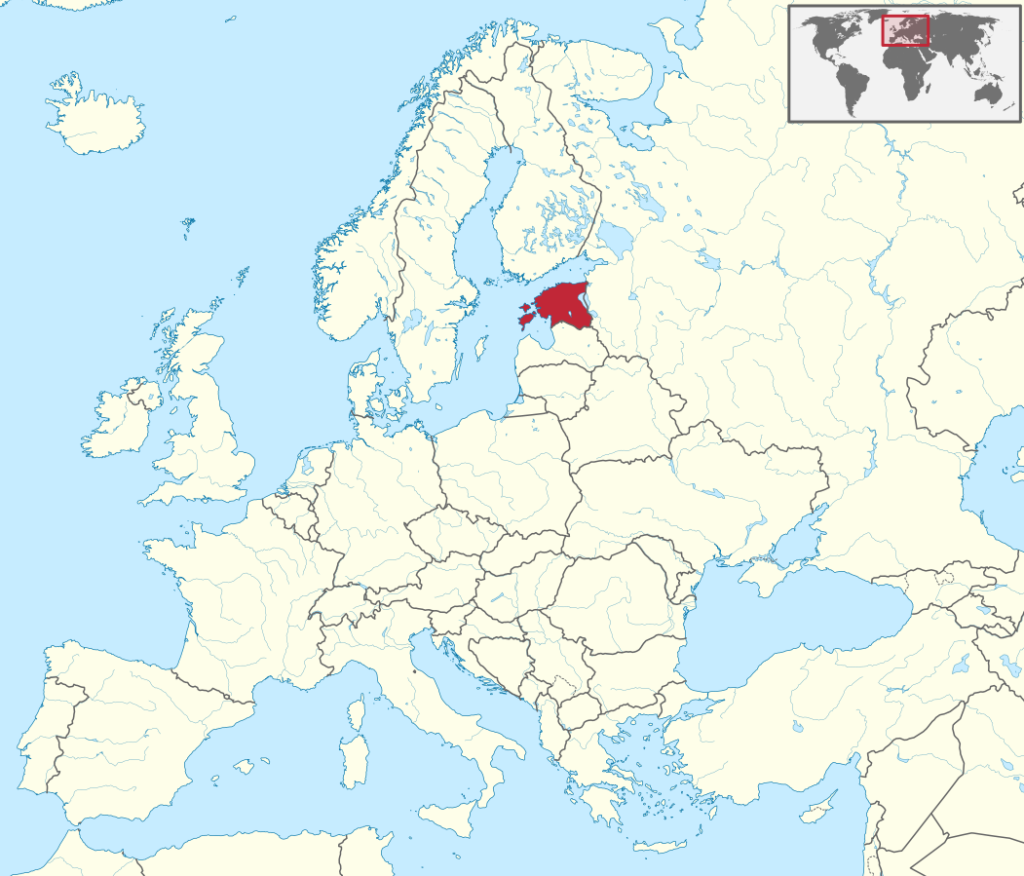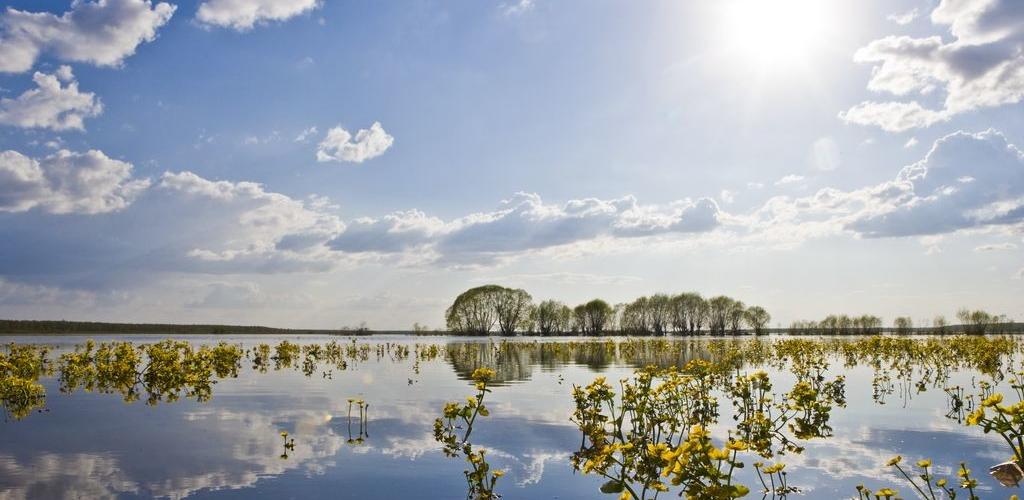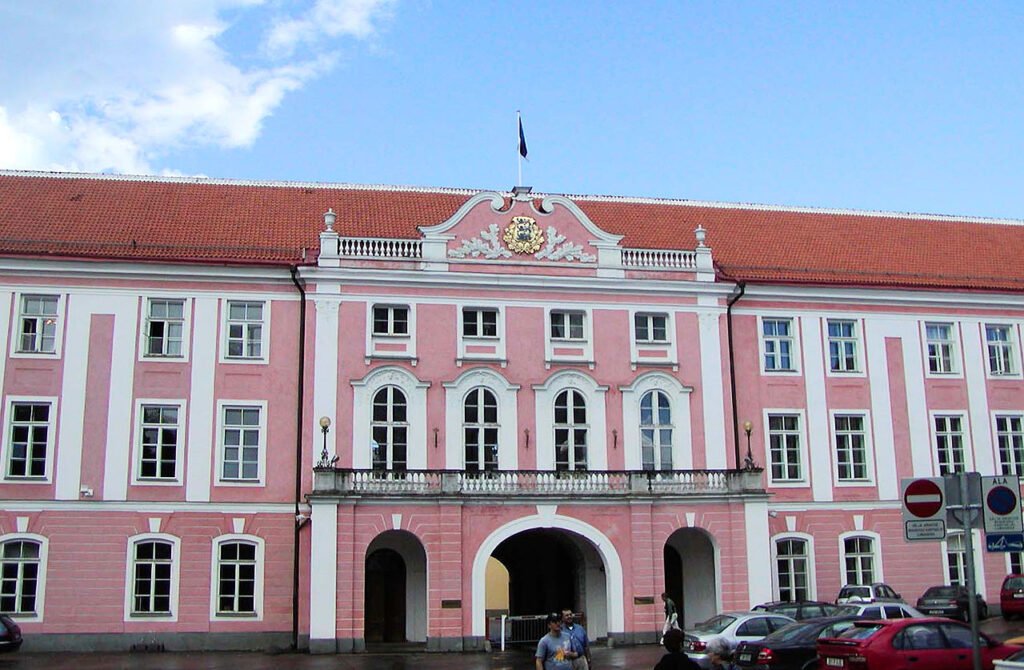On the eastern coast of the Baltic Sea, Estonia is known as Estonia (Estonian: Eesti) or Eesti Vabariik (Estonian: Eesti Vabariik). The country’s eastern border is with Russia (324 km) and the southern border with Latvia (333 km). The northern maritime border with Finland lies in the Gulf of Finland; the northern and western maritime borders are the Baltic Sea and the North Sea.
Under the name «Estonia» (Esthonia), the country joined the League of Nations in 1921 after gaining its independence in 1918. The Estonian Soviet Socialist Republic, which joined the USSR in 1940, was renamed the Republic of Estonia after the collapse of the USSR in 1991.
OECD member since 9 December 2010 and member of the United Nations since 17 September 1991. Also, a Council of Europe member since 1993. In addition to being a member of the Schengen Area, Estonia is also a Eurozone member.
Basic Information

Capital — Tallinn
Language of the State — Estonian
Currency — Euro (€)
Population — 1 330 068 (January 2021)
Territory — 45,227 km2
This places Estonia 129th in the world and 29th in Europe in terms of population as well as the lowest among the Baltic nations in terms of economy.
Climate — humid continental
Time Zone — UTC +02:00; summer — +03:00
Calling code — +372
Internet TLD — .ee
Brief history
Estonia became the Governorate of Estonia in 1721 after Sweden and the Russian Empire fought the Great Northern War. It was bordered to the south by the Livonian Governorate and to the east by the Saint Petersburg Governorate.
On 24 February 1918, the Soviet Union disintegrated and the Republic of Estonia was proclaimed. As a result of the Estonian War of Independence, Estonia gained its independence. A peace treaty on mutual recognition was signed between Soviet Russia and Estonia on 2 February 1920.
A new Constitution was adopted by the Republic of Estonia on 15 June 1920. Estonia is a parliament republic, according to the Constitution. The League of Nations admitted Estonia on 22 September 1921.
Estonia’s first president, Konstantin Päts, ruled the country from 1938 to 1940.
The Soviet Union incorporated Estonia on 6 August 1940. The territory of Estonia was occupied by Nazi Germany between 7 July 1941 and 24 November 1944.
As a result of the collapse of the Soviet Union, Estonia once again confirmed its independence on 20 August 1991.
After becoming a member of the Organisation for Economic Cooperation and Development on 9 December 2010, Estonia became the first post-Soviet country to do so. Estonia adopted the euro on 1 January 2011.
Geography
North-eastern Europe is home to Estonia. On the north, it is surrounded by the Gulf of Finland, on the west by the Baltic Sea, on the south by Latvia, and on the east by Russia. Besides the Narva River and the Peipus lakes, Estonia has a land border with Latvia and Russia along the Pskov region. There are 3,794 kilometers of coastline.
With a total area of 4,200 square kilometers, Estonia has 2,355 islands in the Baltic Sea. In square kilometers. The largest are Saaremaa (2,673 km2) and Hiiumaa (1,023 km2) and Muhu (206 km2), Vormsi (93 km2) and KihnU (16.4 km2). Even though the islands cover a large area, their population is less than 5% of the country’s total.
More than 1,100 lakes cover about 5% of Estonia’s territory, nearly all of them originating from ice. Small rivers are abundant in Estonia.

Estonia has a total of 3,923 protected natural objects. There are 231 nature reserves, 157 landscape reserves, 6 national parks, 59 conservation areas that are old or undeveloped, 512 parks and stands, 319 preserves, 1,553 permanent habitats, 23 local government protected natural objects, and 1,066 individual protected natural objects, covering 23% of the national territory as a whole.
Flora
There are almost 35% of all Estonian species or subspecies at the border of their zones of distribution due to Estonia’s proximity to the vegetation-geographical provinces of Eastern and Central Europe.
Various climates have brought relics of different climatic periods to Estonia, which are referred to as stranded species.
A major reason for the spread of weeds is agriculture and freight traffic. It is estimated that there are more than 2,500 species of algae and 680 species of lichen found on lower plants in Estonia. Estonia has 1,441 species of vascular plants and 1,538 subspecies of those species, according to the latest data.
Wildlife
It is estimated that there are about 60 species of mammals in the wild. The number of moose, roe, hares, and boars is very high. Raccoon dogs and noble deers were introduced in the 1950s and 1960s. In the largest forests in many parts of Estonia, you can find a brown bear and a lynx.
Besides foxes and martens, badgers and squirrels live in the forests. Weasels, stoats, and ferrets are the most common species, along with European minks and otters near the ponds. A hedgehog, long-tailed shrew, and mole are some of the most common.
Diverse species of birds make up the majority of the species. The species count in Estonia is 331, including 207 species nesting permanently (c. 60 live year-round). It is common for many birds to migrate in mass during the spring and autumn to summer nesting grounds or tropical countries to spend the winter. There are 3 species of lizard and 2 species of snake, including common viper, in Estonian forests.
In freshwater and coastal waters, there are more than 70 fish species. Fisheries play an important role in many of them.
Climate
North and west are bound by the Baltic Sea; Estonia is located in the temperate zone. Climate is heavily influenced by Atlantic cyclones, and the sea nearby always keeps the air moist. Gulf Stream influences the climate of the Mediterranean, making it warmer in winter than in mainland Eurasia.
Traditionally, summer is the most popular time of year for holidays. During the summer, Estonia has an average air temperature of +20°C.
The Baltic Sea is the main factor influencing temperature formation in Estonia’s inland regions. There is a much greatertemperature difference between coastal and central areas in winter.
Estonia has significantly warmer average annual temperatures than continental climates located at the same latitude to the east.
Administration
The Estonian Republic is divided into 15 regions. In total, there are 33 towns in the country. Tallinn is the country’s capital and has approximately 400,000 residents (about a third of the country’s population). There are about 100,000 people living in Tartu, the second most populous city. There are about 50,000 people living in Narva, the third city.
Government system
A democratic parliamentary republic with the people as the ultimate authority, Estonia is an independent democratic republic with a Constitution adopted in 1992.
A unicameral parliament governed by 101 deputies is known as the Riigikogu, which is elected by direct and equal elections. The country’s 18-year-old citizens can vote in four-year parliamentary elections.
Estonian parliament building, Tallinn. Source: https://neweasterneurope.eu/2019/02/21/riigikogu-election-what-lies-ahead-for-estonian-democracy-in-2019/By secret ballot, the members of the Riigikogu or the electoral college elect the president of the country every five years for a maximum of two consecutive terms.
The government has executive power. Whenever a parliamentary coalition or a winning parliamentary party won an election, the Prime Minister leads the government. Cabinet of Ministers are appointed by the president following the approval of the Prime Minister’s nomination.
The Chancellor of Justice oversees how the Constitution and the law are implemented by the public authorities, anindependent official appointed by parliament on the president’s nomination. Another independent body, the State Control Authority, is in charge of budget and property management for the State.
It is the Supreme Court that has the highest judicial authority. It is the district courts that decide appeals; the county courts, the city and administrative courts, as well as the prosecutorial authorities – the Public Prosecutor’s Office and the district procurators – decide cases in the first instance.
Essentially, local governments are responsible for organizing and managing all aspects of local life. They operate autonomously, have their own budget, and are authorized to levy certain local taxes and fees (e.g. advertising, street closures, pets, entertainment, parking fees).
Economy
In addition to being a member of the European Union, Estonia has a highly developed economy. Estonia has one of the highest levels of development among post-communist countries.
The minimum wage for the year 2021 will be 584 euros, with an hourly rate of 3,48 euros.
Independence period
Since Estonia gained independence, its economy has been restructured and oriented towards Western Europe according to market principles. Instead of using the Soviet ruble as its currency, Estonia introduced its own krone on 20 June 1992.
As a result of foreign aid, loans, and loans worth more than $285 million, as well as the receipt of over $100 million from the prewar republic, Estonia’s economic transformation was successful between 1991 and 1993. During the USSR accession in 1940, Estonia’s foreign banks froze its funds.
In 2000, the country established a market economy, which subsequently caused it to lose its status as a developing country. WTO membership was granted to Estonia in 1999. Finnish, Swedish, German, and Russian companies are the main trading partners of the country. Negative trade balances remain the most serious problem. Since 2004, Estonia has been a member of the European Union.
On 1 January 2011, the Estonian government implemented its updated June 2009 plan for the transition to the euro.
Business environment
As a result of Estonia’s independence, four companies have reached more than $1 billion in capitalization (unicorns): Skype, Bolt, TransferWise, Playtech. Following Estonia’s decision to invest in e-services since independence, several reforms have been implemented in the last 30 years. Estonia has also become an attractive country for startups, due to its business environment, education level, innovation environment, and e-services sector.
It is internationally recognized that Estonia is an e-country. In the world, there is no comparable digital society to that built by Estonians. Every year, more and more people are attracted to the Estonian digital ecosystem because of its uniqueness. The Estonian market offers a range of career opportunities that attract entrepreneurs and professionals from around the world to invest and start a business.
It has taken Estonia a few decades to build a digital society as a small Northern European nation. Despite having less than 2 million people, the country leads the way in IT and is considered 99% digitalised. Over the years, Estonia has become more and more popular as a prominent European entrepreneurial hub due to its unlimited tech opportunities.
Foreign policy
Estonia has been a member of the European Union since May 2004 and the Eurozone since January 2011. Estonia was the first post-Soviet country to adopt a single currency and abandon its independent monetary policy, as well as one of the three former socialist republics to integrate into the European market and Schengen area. Consequently, EU law takes precedence over domestic law when a country is a member of the EU.
Also, Estonia joined NATO on 29 March 2004. Afghanistan and Iraq are NATO missions Estonia participates in.
Membership in the Council of Europe has been in place since 13 May 1993. The UN, OECD, OSCE, and WTO are among the organizations Estonia belongs to.
Culture
Cultures from different parts of the world meet in Estonia. Estonian culture is related to Latvian, Finnish, Lithuanian, Russian north-west Russia, Belarusian, Swedish, and German cultures.
Industrialization, modernization, and rapid urban development strongly influenced Estonian culture during the 19th and 20th centuries. A marginalization of Baltic-German culture in Estonia began in the first decade of the 20th century. Architectural, literary, and musical works showed signs of national style and maturity, following world currents.
Derpt (now Tartu)’s Imperial Yuriyev University was restored in 1802 and played an important role in the development of Estonia’s culture. As a result of the French Revolution and the German romantic movement, the university became a conduit for Western European ideologies – ideals of freedom, equality, and brotherhood.
Tallinn and Tartu hosted the first independent exhibitions of Estonian art in 1909. As with music, there are signs of national style in Estonian architecture of that era along with adherence to world currents.
The Tartu University Library and the Tallinn National Library are the two largest libraries in Estonia with about 600. A list of Estonian theatres includes the Estonian Drama Theater, Linnatherater (City Theatre), Theatre Varnemuin in Tartu, Russian Theater of Estonia, Puppet Theatre, Rakvere Theatre, Theatre Endla in Pärnu, and Theatre Ugala in Viljandi. It is called the “Eesti concert” and is organized by the Estonian Concert Association. Tallinn is home to the Estonian Philharmonic and the National Opera Estonia.
Estonia made its debut at the 1920 Olympic Games in Antwerp, and three years later, the Olympic Committee was established. In the 1920s and 1930s, Estonian athletes for the years of 6 golden, 6 silver, 9 bronze medals — all gold medals in the account of wrestlers and weightlifters.
In the 1930s, the country’s chess team made significant progress, and Paul Keres was one of the world’s strongest players in the mid-20th century.
One of the world’s winter sports centres is Otepä, which hosted the 2010 and 2015 bi-at-lo events. Skiers Kristina Schmigoon and Andrus Veerpalou were among the leaders in their sport in the 1990s-2000s, the Olympic champions.
Motorists Markko Myrtin and Ott Tianak won the World Rally Championships.
Sport
An Olympic Committee was established three years after Estonia’s debut at the 1920 Antwerp Games. During the 1920s and 1930s, wrestlers and weightlifters won six gold medals, six silver medals, and nine bronze medals.
A world-class player during this period, Paul Keres, has significantly improved the country’s chess team since the 1930s.
Otepä, one of the world’s winter sports centers, held bi-at-lo events in 2010 and 2015. Olympic champions Kristina Schmigoon and Andrus Veerpalou were among the top skiers of their sport in the 1990s and 2000s.
In the World Rally Championships, Markko Myrtin and Ott Tianak won.
e-Estonia
Paperless cabinet meetings have been held in Estonia since 2000, using a network of electronic internet documentation. A European Commission competition resulted in the transformation of the public sector into electronic documents. Almost 500 institutions have already exchanged electronic documents as a result of the project. The best in Europe, including all ministries, county offices, and almost all departments and inspectorates. Since 2000, it is possible to file tax returns electronically in Estonia.
A variety of services are available through LKS Consult OÜ, including company formation in Estonia and accounting services in Estonia.

